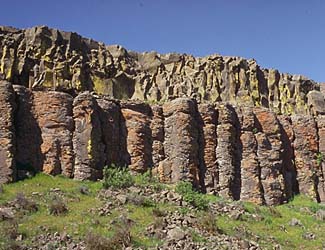 |
Metadata (Data about data or how the map was made)
Legend:
 = Core Habitat
= Core Habitat
 = Marginal Habitat
= Marginal Habitat
Predicted Distribution
Reptiles do not migrate as some birds and mammals, so the colored areas depict
the predicted range for the Western Fence Lizard year-round. The habitats were
identified using 1991 satellite imagery, other datasets and experts throughout
the state, as part of the Washington Gap Analysis Project.
Distribution and Habitat Requirements
The Western fence lizard is arboreal in lower elevation habitats, and becomes
more terrestrial at higher elevations (Adolph, 1990a.b). This lizard lives
in rocky canyons and talus slopes of both deserts and wooded areas throughout
its range (Nussbaum et al., 1983), but in Washington it is restricted primarily
to dry forest zones and coastal habitats.
It is found on McNeil, Ketron and Fox Islands (Slater, 1941), and has been found on driftwood littered beaches throughout the Puget Sound.

|
Models
The Puget Trough, Columbia Basin, East and West Cascades and Blue Mountains
ecoregions were selected. The Puget Sound Douglas-fir, Western Hemlock, Three-tip
Sage, Klickitat Meadow Steppe, Bitterbrush, Wheatgrass/Fescue, Oak, Ponderosa
Pine and Interior Douglas-fir zones were core. The Central Arid Steppe and
Grand Fir zones were marginal.
On the east side, good habitats were rivers, grasslands, shrub savannas, shrubland, tree savannas, and open-canopy hardwood, hardwood/conifer and conifer forests. Non-irrigated pasture in forest zones were suitable if adequate habitat was available. The lizards were included in orchards and gravel pits, but these habitats were not considered to provide long-term viability.
On the west side, only coastal beaches were included.
Other
maps & Information:
|
Translated from the Washington Gap Analysis Amphibians and Reptiles Volume by Karen Dvornich
Webpage designed by Dave Lester.